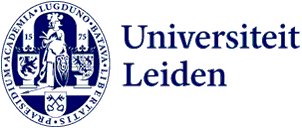
LUF grants for historical hormone research and safe, inclusive cities
Why did fewer women suffer from osteoporosis in the past than today? And which aspects of a city make public spaces safe, accessible and comfortable for all residents? These two research questions will be explored in more detail thanks to an Impulse Grant from the Leiden University Fund.

Osteoporosis puts almost a million people in the Netherlands at high risk of fractures and pain. Women over 50 in particular suffer from osteoporosis and lose their independence as a result. But women in the 19th century retained strong bones, a small pilot study by archaeologist Dr Sarah Schrader and internist endocrinologist Dr Liesbeth Winter has shown, whereas men’s bone density decreased. ‘We suspect that repeated pregnancies, longer periods of breastfeeding and the associated hormone fluctuations had a protective effect on bones.’

Learning from the dead
To see whether these suspicions are correct and which lifestyle and environmental factors may also have played a role, the researchers want to investigate around 3,000 skeletons from the period 1100 to 1850. They will use modern technologies to record bone quality and hormonal changes over more than 900 years and will compare the results with modern bones. ‘Little is known about bone health in the past,’ says Dr Schradder. ‘The LUF grant should help us pinpoint the causes of osteoporosis, which will allow us to develop treatments or prevention methods in the future.’

Inclusive and sustainable cities
An impressive nine researchers from five faculties are working together on the second project to receive an Impulse Grant this year. Historian Dr Alistair Kefford and his team will research what makes public spaces in cities safe and sustainable for all. At present, 56 per cent of the global population lives in cities, but this is expected to increase to 70 per cent by 2050. That brings challenges in the areas of public health, nature, the economy and social cohesion. And sometimes solutions are conflicting: a criminologist will suggest plenty of lighting to make cities safer at night, whereas a biologist would rather switch off the lights so as not to disrupt animals’ rhythms.
Collaboration with The Hague
To find ways to solve this complicated puzzle, the research team is working with the Municipality of The Hague. ‘There’s a lot of urban redevelopment in the city, so our research on more inclusive and sustainable public spaces is coming at a good moment,’ says Dr Alistair Kefford, chair of the BA in Urban Studies at Campus The Hague. ‘And many colleagues and students are already conducting research in The Hague because the bachelor’s is taught here. That makes our project unique: it’s both a research and a teaching project. This means we can suggest improvements for the city but also for the Bachelor’s in Urban Studies.’
Text: Wilke Martens
